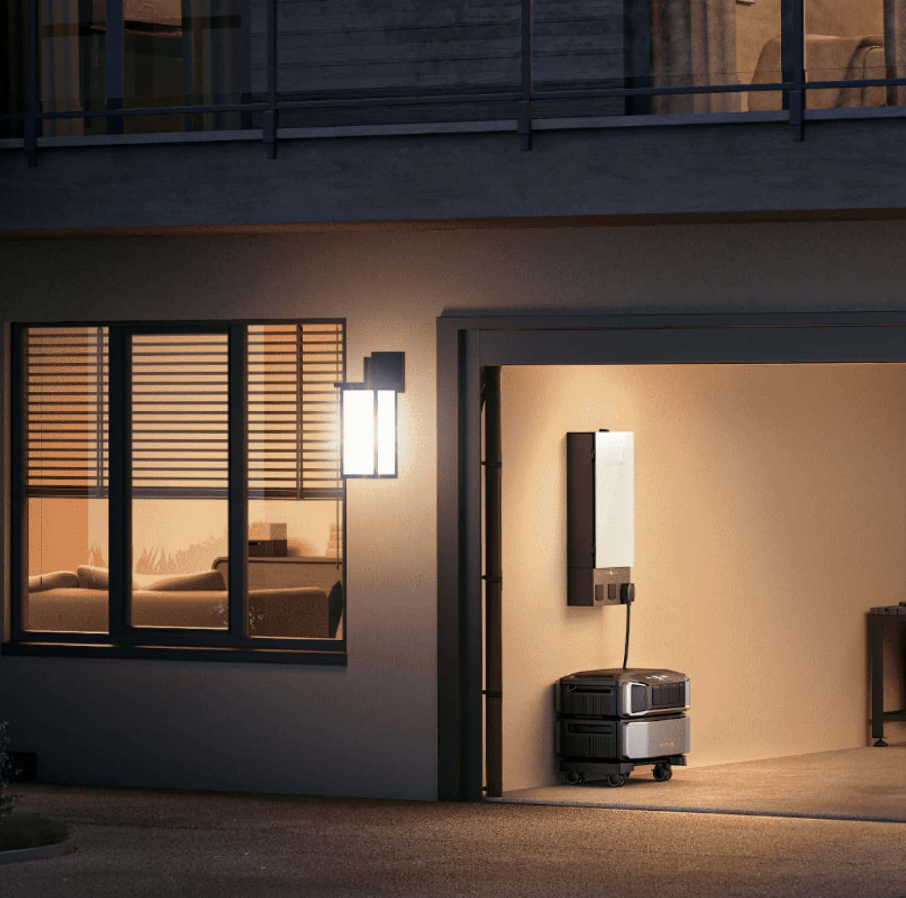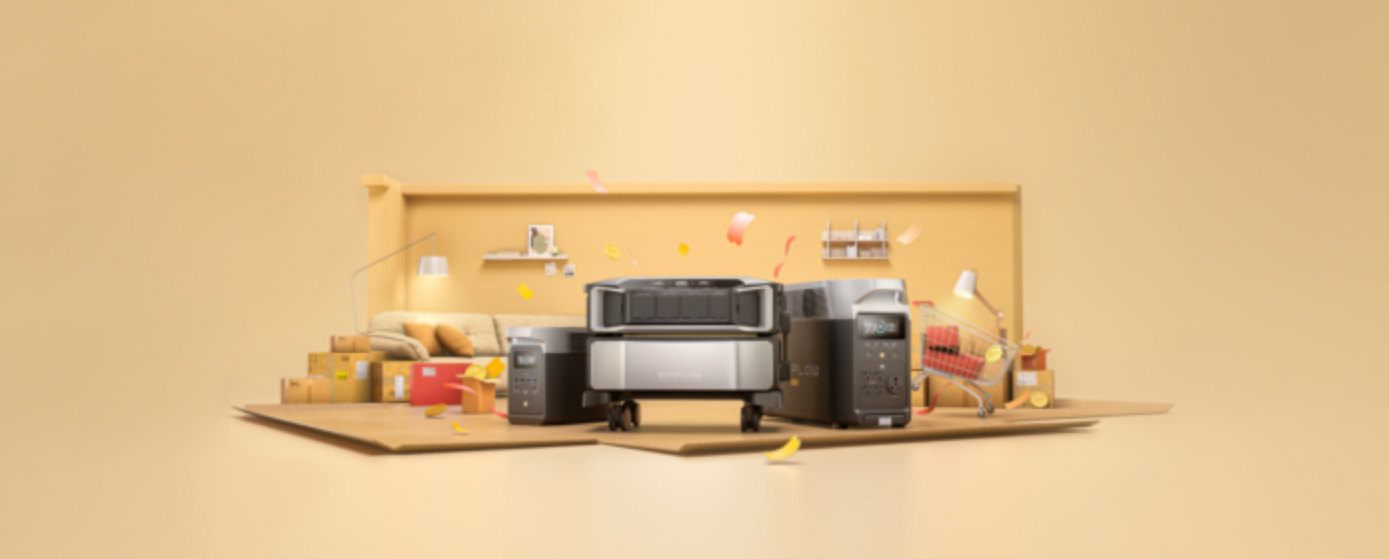The Ultimate Guide to Choosing the Heart of Your Disaster Prep Kits
- What We Mean by “The Heart” of Your Kit
- Water: No Backup Plan Works Without It
- Food: Keep It Simple, Calorie-Dense, and Familiar
- Power and Communication: What Keeps You in Control
- Shelter and Warmth: Stay Dry, Stay Alive
- First Aid and Medications: Don’t Wait for Help
- Making It Personal: Tailor Your Kit to Your Life
- What About the 30% Tax Credit?
- How to Keep Your Kit Ready
- Run a Drill, Not Just a Checklist
- Final Thoughts: Choose the Right Tools, Not the Most
When a storm knocks out the power or the grid goes down for days, what you have packed in your emergency kit suddenly matters—a lot. You may already have the basics: canned food, flashlights, a first aid kit. But what actually keeps your household functional? What keeps you warm, connected, fed, and calm?
The answer is power—and a smart setup around it.
This guide walks you through how to build the core of your disaster prep kit, piece by piece. It's not about hoarding. It’s about choosing the right tools now, so you’re not scrambling later.
What We Mean by “The Heart” of Your Kit
Every solid emergency kit covers five critical areas:
- Water
- Food
- Power & Communication
- Shelter & Warmth
- First Aid & Medications
But they’re not all created equal. Some elements are easy to overlook until it’s too late—like backup power. Let’s dig into each pillar and show how they work together, especially when you don’t have days to prepare.
Water: No Backup Plan Works Without It
You can survive weeks without food. Without water, you’ve got about three days.
Here’s what that means in practical terms:
- Store one gallon per person per day. Three days is a minimum; two weeks is safer.
- Use a purifier, not just bottled water. Tablets, portable filters, or UV pens help clean water you collect.
- Include collapsible containers. These are easy to store and useful for rainwater or backup supply runs.
- Test before you drink. Water quality test strips are inexpensive and easy to use.
Tip: Rotate stored water every 6 months. Don’t rely on a single purification method.
Food: Keep It Simple, Calorie-Dense, and Familiar
In a power outage, food becomes more than fuel—it’s structure, morale, and comfort.
What to aim for:
- Long shelf life (3–25 years)
- Low prep requirements (boiling water at most)
- Balanced calories (carbs, fat, protein)
- Familiar taste (don't test your first MRE during a blackout)
Pack foods like:
- Canned proteins: tuna, chicken, beans
- Dry goods: oats, crackers, protein bars
- Instant meals: soups, freeze-dried meals
- Powders: milk, electrolyte mixes
You don’t need gourmet—just dependable fuel that won’t expire on you.
Power and Communication: What Keeps You in Control
This is where most kits fall short.
Losing power means more than no lights. It means no fridge, no phone charger, no news.
What Works Best?
Let’s talk options.
Basic
- Hand-crank flashlight-radio combos
- AA/AAA battery banks
- Solar phone charger
Smart (and Prepared)
These go beyond charging a phone. They run refrigerators, fans, home appliances, even your home router—without gas, fumes, or noise. Let’s break them down:
EcoFlow DELTA 2 Max
Capacity: 2048Wh (expandable to 6kWh)
Output: 2400W (surge up to 3400W)
Ports: 15 total, from USB to AC to car plug
Charging: Full in 43 minutes (AC); solar-ready
What it powers: Fridge for 24 hours, devices overnight, phone 100+ times.
If you want the best portable power station to handle short-term emergencies, this one is compact, quiet, and smart enough to recharge from your rooftop solar or the car.
EcoFlow DELTA Pro 3
- Capacity: 6kWh (expandable to 24kWh)
- Output: 120V and 240V dual voltage
- Best Use: Full-room coverage—kitchen, laundry, or garage
- Extra: Works with EcoFlow Smart Home Panel 2
- for automated switchover


Ideal for families that want real backup—something that keeps the food cold and the EV charging during a multi-day outage.
EcoFlow DELTA Pro Ultra
- Capacity: 6kWh up to 90kWh
- Output: 7.2kW to 21.6kW
- Best Use: Whole-home backup
- Solar Input: Supports high-voltage rooftop systems
- Smart Control: 0ms UPS switchover, app monitoring
For serious preppers, remote homes, or those integrating with solar—this is what "ready" really looks like.
Communication Matters Too
- NOAA weather radios = alerts when cell networks are down
- Walkie-talkies = contact across rooms or blocks
- Whistles = signaling in debris or noise
- Phones = load offline maps ahead of time
Shelter and Warmth: Stay Dry, Stay Alive
Whether you're stuck at home or forced to leave it, keeping warm and protected is key.
Pack smart:
- Emergency bivy sacks
- Thermal blankets
- Tarp or compact tent
- Gloves, wool socks, hats
- Waterproof fire-starting kit
Think layers. Think insulation. Think tools you can actually set up in the dark.
First Aid and Medications: Don’t Wait for Help
You don’t need a hospital-level setup—but you need more than a few Band-Aids.
At minimum:
- Gauze, antiseptic wipes, tape
- Painkillers, allergy meds, anti-diarrheal
- Thermometer, tweezers, trauma scissors
- Your own meds (30-day supply)
- Emergency contacts printed out
Tip: Add emergency dental repair putty, especially for rural areas or long outages.
Making It Personal: Tailor Your Kit to Your Life
Every family is different. Your prep kit should reflect that.
For kids:
Extra snacks, toys, diapers, meds
For seniors:
Mobility tools, medical alert info, more water, longer medication supply
For pets:
Leashes, food, meds, waste bags
In cold climates:
Heat packs, more calories, winter-rated bags
In hot zones:
Electrolytes, shade tarps, sunblock
What About the 30% Tax Credit?
If you’re in the U.S., here’s a real opportunity:
Home energy storage systems over 3kWh may qualify for the IRA 30% tax credit. That includes units like DELTA Pro 3 and DELTA Pro Ultra.
That’s 30% of the total system cost—hardware, installation, even panels—back on your taxes.
But heads up:
- There's uncertainty about how long this incentive will stay at 30%
- Tariffs on imported batteries may raise retail prices soon
- As demand grows, so do shipping delays
That’s why events like EcoFlow Prime Day and seasonal EcoFlow discounts can make a meaningful difference. It's not about chasing sales—it’s about buying smart while the incentives stack in your favor.


How to Keep Your Kit Ready
Monthly
- Check batteries and expiration dates
- Run your power station until 20% and recharge
- Refill water containers if needed
Quarterly
- Rotate food
- Test radios, solar panels, and lighting
- Review your family’s contact info
Annually
- Replace expired meds
- Update your plan for new threats (wildfire, flood, etc.)
- Upgrade anything that broke, rusted, or became obsolete
Run a Drill, Not Just a Checklist
Don’t wait for a real emergency to test your system.
- Cook a meal using only your emergency food
- Run your fridge off the backup power for 24 hours
- Set up your tarp or emergency tent blindfolded
- Simulate 48 hours without power, and see what you miss
Preparedness is a skill. The more you use your kit, the better you’ll know it.
Final Thoughts: Choose the Right Tools, Not the Most
You don’t need everything. But you do need the right things.
And if you want to make power a part of your plan—something more sustainable than flashlights and AA batteries—you have great options now.
Whether it's the best portable power station for weekend storms or a full-system upgrade for long-term readiness, you’ll feel the difference the moment the grid goes down and you’re still comfortable.
Make choices now that you won’t regret later.
That’s the real heart of any disaster plan.